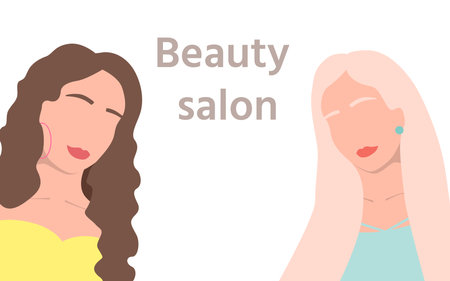Introduction: The Great Hair Product Debate
Walk into any big-box retailer or pharmacy in the U.S., and you’ll see aisles packed with affordable hair styling products from brands like L’Oréal, Tresemmé, and Garnier. On the flip side, salon shelves and specialty beauty stores showcase high-end labels such as Oribe, Bumble and bumble, and Kerastase, promising luxe ingredients and professional results. So what’s really the difference? And is paying top dollar always worth it?
This debate isn’t just for beauty junkies or stylists—it’s a hot topic for pretty much anyone who cares about their hair. American consumers are savvy shoppers, constantly weighing cost versus value, especially with the rising price of self-care products. With so many TikTok reviews, YouTube hauls, and beauty blog breakdowns, people want to know: Are drugstore hair styling products secretly just as good as high-end ones? Or do pricier options actually deliver noticeably better results?
To help break things down, here’s a quick snapshot of what typically separates drugstore and high-end hair styling products:
| Drugstore | High-End | |
|---|---|---|
| Price Range | $3–$15 | $20–$60+ |
| Where to Buy | Supermarkets, pharmacies (like CVS, Walgreens), mass retailers (Target) | Salons, specialty beauty stores (Ulta, Sephora), brand websites |
| Packaging & Branding | Simple, functional | Sleek, premium design; often more luxurious feel |
| Main Selling Points | Affordability, convenience, wide availability | Premium ingredients, innovative formulas, salon-quality performance |
| User Experience | Accessible for all budgets; may need more product to achieve desired effect | Often less product needed per use; claims of superior results with less effort |
No matter your hair type or budget, everyone wants products that deliver on their promises. In this series, we’ll dive into how drugstore and high-end styling products stack up—and whether the splurge is truly worth it for your daily routine.
2. Price Point: Does Expensive Always Mean Better?
When it comes to hair styling products, the price tag can be a real head-scratcher. Walk down any beauty aisle in Target or Walgreens and you’ll see shelves full of affordable drugstore brands right next to pricier options from high-end lines. So, what’s the real difference? Does spending more actually get you better hair, or are you just paying for the name?
The Cost Breakdown
| Product Type | Drugstore Price Range (USD) | High-End Price Range (USD) |
|---|---|---|
| Hairspray | $5 – $12 | $20 – $40 |
| Mousse | $4 – $10 | $18 – $35 |
| Styling Cream | $6 – $15 | $22 – $50 |
| Heat Protectant Spray | $7 – $14 | $24 – $45 |
It’s easy to see that high-end products can cost two to three times more than their drugstore counterparts. But does that price difference really add up to better results?
What Are You Paying For?
- Ingredients: High-end brands often use more premium or exclusive ingredients, but not always. Many drugstore products now offer similar formulas with nourishing oils and advanced technology.
- Packaging: Luxe packaging is a hallmark of high-end products, which may look nicer on your vanity but doesn’t impact how well the product works.
- Brand Reputation: Sometimes, you’re paying for the prestige of a salon name or celebrity endorsement.
- Performance: While some high-end products do deliver superior results for specific hair types or needs, many drugstore picks perform just as well for everyday styling.
The American Value Perspective
In the U.S., shoppers love a good deal and want to know they’re getting value for their money. That’s why so many people are loyal to certain drugstore brands—they deliver consistent performance at wallet-friendly prices. In fact, many stylists recommend mixing and matching: splurge where it matters most for your hair, but don’t be afraid to save on basics like hairspray or gel.
![]()
3. Ingredients and Formulation Differences
What Goes Into Drugstore vs. High-End Hair Styling Products?
When youre standing in the hair care aisle, its easy to wonder if those expensive high-end products are really all that different from the drugstore options. The answer often lies in their ingredients and how theyre formulated. Lets break down what you might find on those ingredient labels and see how it could impact your hairs health and your styling results.
Key Ingredient Differences
| Ingredient Type | Drugstore Products | High-End Products |
|---|---|---|
| Sulfates (e.g., Sodium Lauryl Sulfate) | Commonly used for cleansing and lather but can be drying | Often replaced with gentler cleansers or are sulfate-free |
| Silicones (e.g., Dimethicone) | Frequently included for smoothness and shine; may cause buildup | May use lighter or water-soluble silicones, or be silicone-free |
| Alcohols (e.g., SD Alcohol 40) | Used for quick-drying formulas but can dry out hair | More likely to use fatty alcohols (like cetyl alcohol) that condition hair |
| Nourishing Oils (e.g., Argan Oil, Coconut Oil) | Present, but often in lower concentrations or further down the list | Higher quality oils used in greater amounts for more nourishment |
| Fragrance & Dyes | Synthetic fragrances and dyes are common; can cause irritation for sensitive scalps | Might use natural fragrances or essential oils; fewer artificial additives |
| Proteins & Botanical Extracts | Less concentrated, mostly for marketing appeal | Purer extracts and higher-quality proteins for targeted benefits |
How Formulation Affects Hair Health and Styling Results
Chemical vs. Nourishing Ingredients
Drugstore products tend to focus on affordability, so they often contain more synthetic fillers, stronger detergents, and cheaper conditioning agents. While these can help achieve quick styling results like hold or shine, they may strip natural oils or leave residue over time—especially if you style daily.
Performance Boosts from High-End Formulas
High-end brands typically invest more in research and advanced formulations. This means you might get products with micro-encapsulated nutrients, heat-protectant complexes, or humidity-blocking technology. These features can make a noticeable difference if you have specific hair needs like color protection, frizz control, or damage repair.
The Bottom Line on Ingredients: Why It Matters for Your Hair Goals
If youre just looking for a quick fix before heading out the door, a drugstore product will probably do the trick. But if you want longer-term hair health, enhanced styling performance, or need to address special concerns like damage or dryness, checking the ingredient list—and investing in better formulations—can really pay off.
4. Performance and User Experience
When it comes to hair styling products, performance and user experience are what really matter. Americans have a wide range of hair types, from straight and fine to curly, thick, or coily. Styling trends also vary—from sleek ponytails to beach waves and textured looks. So, how do drugstore and high-end products stack up in real-life results? Let’s break it down.
How Products Perform on Different Hair Types
| Hair Type | Drugstore Performance | High-End Performance |
|---|---|---|
| Straight/Fine | Lightweight formulas, may lack lasting hold; good for simple styles | Smoother application, better volume and hold without weighing hair down |
| Wavy/Medium | Affordable options for texture sprays; sometimes sticky or heavy residue | More natural finish, less buildup, flexible hold for trending looks like beach waves |
| Curly/Thick/Coily | Budget-friendly gels and creams, can cause flaking or dryness with daily use | Hydrating ingredients, frizz control, longer-lasting definition for curls and coils |
User Satisfaction: What Americans Are Saying
Most American shoppers love the affordability and easy access of drugstore brands. Many find their favorite everyday hairsprays or mousses at big retailers like Target or Walmart. However, some report inconsistent results—what works great one week may fall flat the next. High-end products are praised for their luxurious feel and long-lasting effects but can be pricey. Users often mention that a little goes a long way with salon brands.
Common Customer Feedback:
- Drugstore: “Great value but sometimes leaves my hair sticky.” “Easy to find at any CVS or Walgreens.” “Doesn’t always control my frizz all day.”
- High-End: “Smells amazing and keeps my style in place even on humid days.” “Worth the splurge for special occasions.” “Wish it was more affordable!”
What Stylists Think
A lot of American hairstylists believe that high-end products give more predictable and professional results, especially for complex styles or major events. Still, many stylists say there are excellent drugstore finds for basic needs like dry shampoo or lightweight hairspray. The key is matching the product to your hair type and desired look.
Styling Trends in the U.S.
The current trends—think effortless waves, slicked-back buns, and defined curls—require products that offer both hold and flexibility. High-end brands tend to deliver more consistent texture and shine for these styles, while drugstore options are perfect for quick touch-ups or simple everyday looks.
5. Lifestyle Factors: Accessibility, Convenience, and Brand Appeal
When it comes to choosing between drugstore and high-end hair styling products, many Americans look beyond just the formulas. Everyday lifestyle factors like where you shop, how quickly you need a product, and even how a brand makes you feel all play a big role in your decision-making process.
Accessibility & Convenience
For lots of people, convenience is key. Drugstore products are available at familiar places like Target, Walmart, CVS, and Walgreens. You can grab them on your weekly grocery run or even during a late-night emergency. High-end products, on the other hand, are often sold at specialty beauty retailers (like Sephora or Ulta), salons, or online. This means you might have to go out of your way — or wait for shipping — if you want that prestige brand.
| Product Type | Where You Find It | Shopping Experience |
|---|---|---|
| Drugstore | Walmart, Target, Walgreens, CVS | Quick, easy access; part of regular errands |
| High-End | Sephora, Ulta Beauty, Salons | Special trip or online order; more curated experience |
Packaging & Shelf Appeal
Let’s be honest—Americans love good packaging! Drugstore brands often use bright colors and bold fonts to stand out on crowded shelves. High-end brands usually go for sleek, minimalist designs that suggest luxury and sophistication. The “look” of the bottle can totally affect whether someone wants to put it in their bathroom or snap a pic for social media.
Brand Perceptions & Shopping Habits
Brand image matters in the U.S. High-end brands are often seen as aspirational—something special to treat yourself with or show off. There’s a certain status attached to using salon-exclusive products. Drugstore brands focus on being affordable and reliable—the everyday hero products that just get the job done.
| Drugstore Brands | High-End Brands | |
|---|---|---|
| Perception | Practical, budget-friendly, accessible to everyone | Luxe, exclusive, “treat yourself” vibe |
| Main Buyer Motivation | Convenience & price point | Status & perceived quality |
| Shelf Presence | Colorful and attention-grabbing designs | Sleek and sophisticated packaging |
| Impulse Buying? | Often bought on impulse during routine shopping trips | Usually planned purchases or after recommendations from stylists/influencers |
The Bottom Line on American Preferences
The decision between drugstore and high-end hair styling products isn’t just about results—it’s wrapped up in convenience, how easily we can get our hands on something new, how a product looks on our shelf, and what kind of story we want to tell about ourselves through the brands we use. For some Americans, grabbing a hair spray while picking up groceries makes perfect sense; for others, the allure of a luxury brand is worth the extra effort.
6. Conclusion: Choosing What’s Right for You
When it comes to drugstore vs. high-end hair styling products, there’s no one-size-fits-all answer. Both options have their own strengths, and what works best really depends on your individual needs, budget, and lifestyle. Here’s a quick breakdown to help you make the best choice:
Main Differences at a Glance
| Drugstore Products | High-End Products | |
|---|---|---|
| Price | Budget-friendly, easy to find | Higher cost, premium feel |
| Ingredients | Basic formulas, sometimes more fillers | Advanced ingredients, targeted benefits |
| Performance | Works well for everyday styling needs | May offer longer-lasting or more specialized results |
| Accessibility | Available at most supermarkets & drugstores | Mainly found in salons or specialty stores |
| Packaging | Simple and practical | Sleek, often luxurious packaging |
Your Personal Checklist
- Consider Your Hair Type: Some hair textures might benefit from high-end formulas, while others do just fine with drugstore finds.
- Think About Your Routine: If you style your hair daily or need specific results (like anti-frizz or heat protection), investing a bit more could make a difference.
- Stick to Your Budget: There are great options at every price point. Don’t feel pressured to splurge if it doesn’t fit your finances.
- Lifestyle Matters: If you’re always on the go, convenience and accessibility may be your top priorities.
Bottom Line: Find What Works for You!
The “best” product is the one that fits your unique needs. Don’t be afraid to mix and match—maybe a drugstore mousse paired with a salon-quality serum gives you the perfect style. Try out different products, see how your hair responds, and go with what feels right for you.


